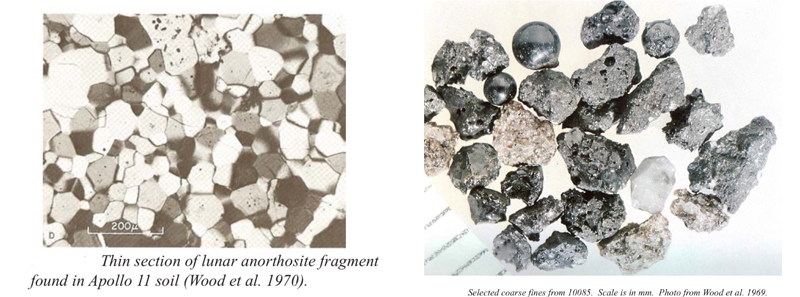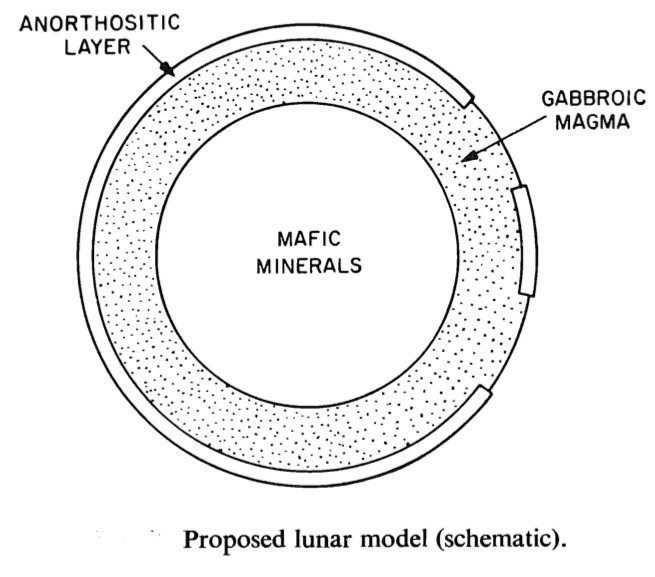Apollo Program’s Continuing Scientific Contributions
by Laurie Averill, volunteer Solar System Ambassador, JPL
July 20 marks the 50th anniversary of Neil Armstrong and Buzz Aldrin’s walk on the Moon. This politically motivated, amazing technologically achievement also yielded an evidence-based scientific understanding of the formation of the Moon’s crust. Apollo moon walkers brought back about 382 kg samples of Lunar regolith (soil) and rocks. From the analysis of two precious, borrowed vials of particles of regolith, bulk soil < 1 mm 10084 and 10085 course fines, that John Wood sewed into his suit jacket for safe keeping during his flight home from Houston, his team formed an evidence-based theory for the formation of the Moon’s crust.

John Wood asked the question not only what the samples contained by also why they surprisingly contained anorthositic terrae or highland fragments from over 50 km away. The Moon was not simply formed from one of long, cold accretion, the clumping together of particles floating in the solar system. Wood et al hypothesized that a fiery collision of Earth and a planetoid initially formed the Moon. As the proto-lunar sphere of magma cooled, its magma ocean differentiated—the lightest component anorthosite floating to the top and cooling into a crystalized crust of at least 25 km in depth. Wood calculated that this depth would be necessary to support the 3 km high mountains of the highlands. (Lunar anorthosites and a geophysical model of the moon. Wood et al)

This crystalized crust was bombarded by asteroids until about 3.9 billion years ago. Mountains formed not by the relatively slow progression of tectonic plates or the repeated eruptions of volcanos but in minutes by the violent collisions of asteroids traveling at kms/sec with the Moon’s surface. The meteoroids plunged deep into the Lunar bedrock creating shockwaves that fragmented it and formed deep craters with steep walls, throwing up mountain-range rims and sometimes a mountainous peak in the crater center. New materials are formed from old—glass and breccia from the molten melding of the meteoroid with Lunar materials. Thousands of tons of Lunar materials were fragmented and ejected. Lighter ejecta spread as far as an entire hemisphere of the Moon from one asteroid collision site. When the Moon was very volcanically active about 3-4 billion years ago, magma formed plains instead of mountains by welling up through lava tubes into cracks in the crater basins, overspreading them and quenching into dark crystalized basalt that cooled, shrank, and cracked to allow access for more magma to upwell.
